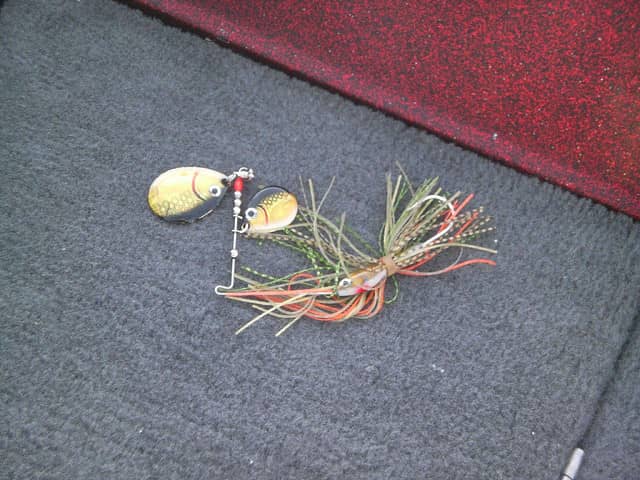Hank Parker on Fishin’ Spring Spinnerbaits
Hank Parker 03.13.12

If you know much about me, then you know I love fishin’ a spinnerbait in the spring as much as I love watching a NASCAR race.
Spinnerbaiting can be just as exciting, especially when big bass are shallow around flooded bushes. When a big ol’ bass races out to grab that blade, it gives me the kind of rush I get when the green flag drops at the Daytona 500.
There are days during the spring when you can’t do anything wrong with a spinnerbait. Chuck it out there, turn the handle and hang on. Something will grab it.
But that isn’t always the case. There are few tricks you need to know when the fish aren’t very aggressive, and I’ve certainly learned my share over the years.
One reason the spinnerbait is so effective is it’s so versatile. You can fish it top to bottom and depths in between. In fact, you may have to changes depths throughout the day on a early spring day.
For example, early in the morning when the water is still cool, the spinnerbait tends to be more effective when slow rolled along the bottom. But as the sun gets up and heats the upper water layer, the fish will suspend farther off the bottom and a medium depth retrieve may be required. Later, the bass may be on top of the grass or bushes and a faster retrieve near the surface is best. That’s why it’s wise to experiment with retrieves throughout the day.
Choosing blades and sizes can be tricky, too. When the fish are aggressive in off-colored water, I like a Colorado blade that puts out a lot of vibration. If the water is clearer and fish aren’t as aggressive, I like an Indiana blade. In clear, cold water, willow leaf blades are best because they emit less vibration.
Now, if the water is cold and muddy, don’t bother fishing. However, if the water temperature is pushing 70 degrees, I like the muddiest water I can find. If it looks like tomato soup, I go as shallow as I can. You’d be surprised how many really big bass you can catch on a spinnerbait in that kind of water during early spring.
My favorite size is 3/4 ounce matched with a pair of Colorado blades in different sizes, such as a No. 3 and 5. Most anglers prefer blades the same size, but I have found that they don’t “chime” as well. When blades are different sizes, they rotate out of sync, meaning one turns one way and the other blade rotates the opposite direction, working against each other and putting out more vibration.
Vibration is important because spring bass don’t always knock the rod out of your hands. With maximum vibration, you know when a bass stopped the bait and will be quicker on the hook-set.
Although I use 17-pound Berkley line most of the time, I’ve learned that heavy line can be a disadvantage because it will spook early season fish.
I found that out years ago while testing low visibility lines on an ultra-clear lake where I could actually see the bass underwater. I noticed that bass would spook before the lure ever got to where they were hiding, and I surmised that the heavy line moving through their lair was displacing water and putting fish on the defensive. Even though the bass aren’t seeing my line in stained or muddy water, they sense its presence moving through the water and that diminishes any ambush notion they might have had.
Reducing line size isn’t an option for fishing heavy cover, so I’ve learned to adjust my casts instead. Whereas I once made casts four feet beyond a target and run the bait into the bush, I now make shorter roll casts just beyond the target and keep my line out of the water as best I can. That not only gives the fish less warning, but the lure jumps in front of them, triggering the impulsive strike.
Learn to do the same and you’ll get more strikes.

